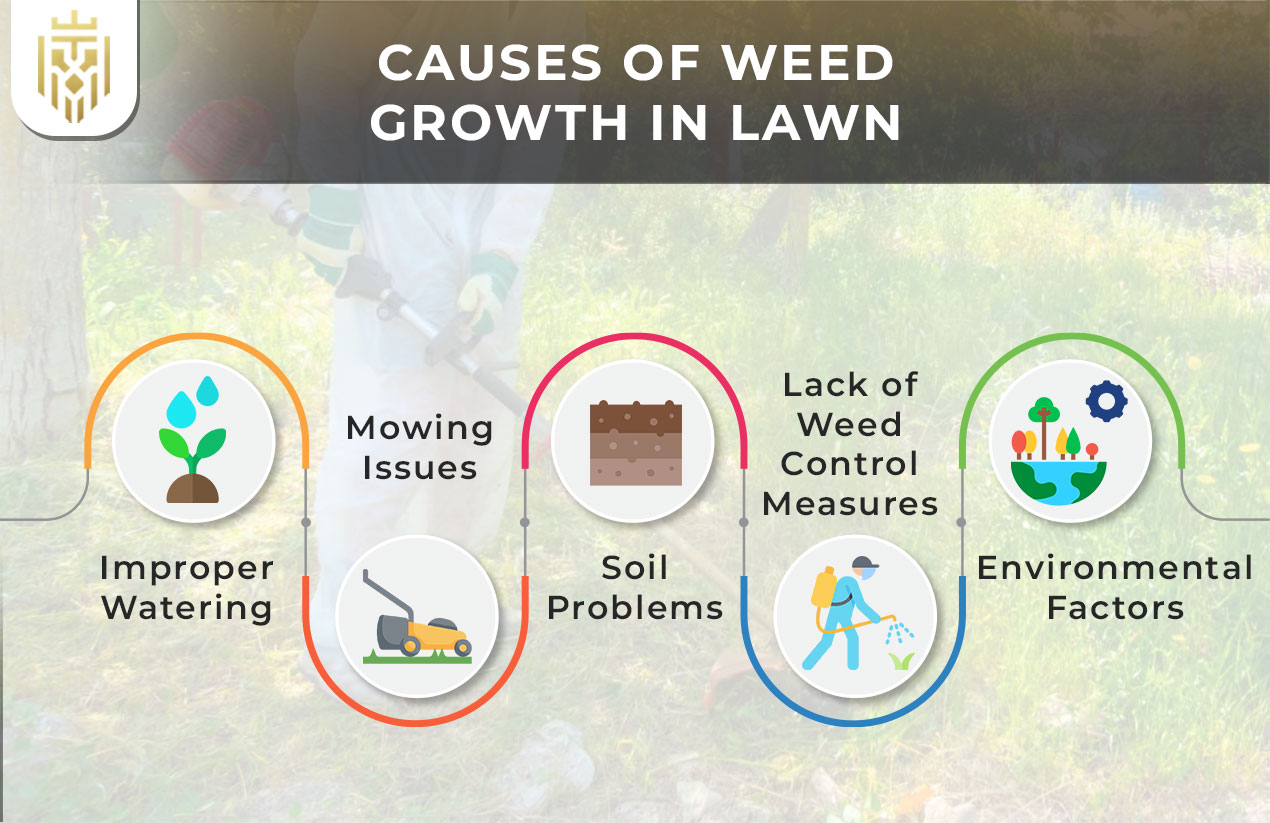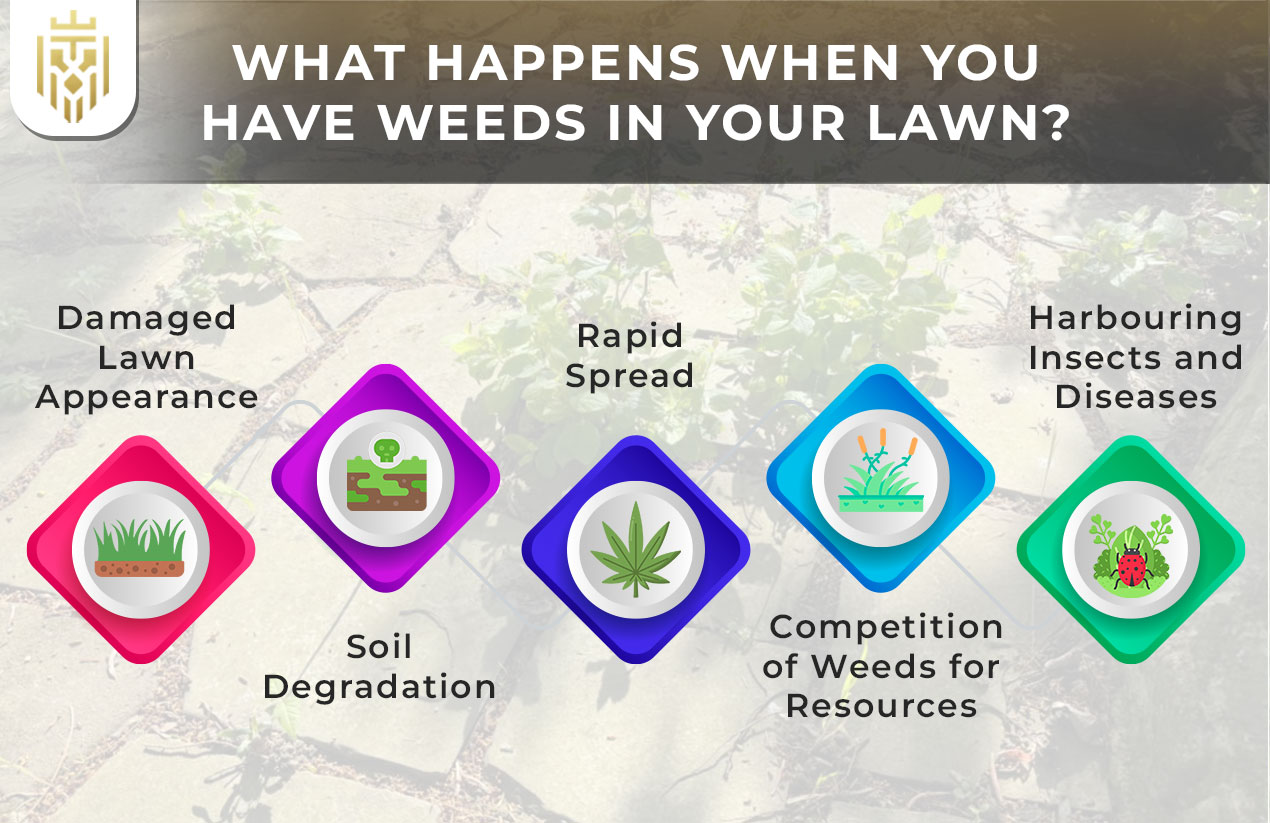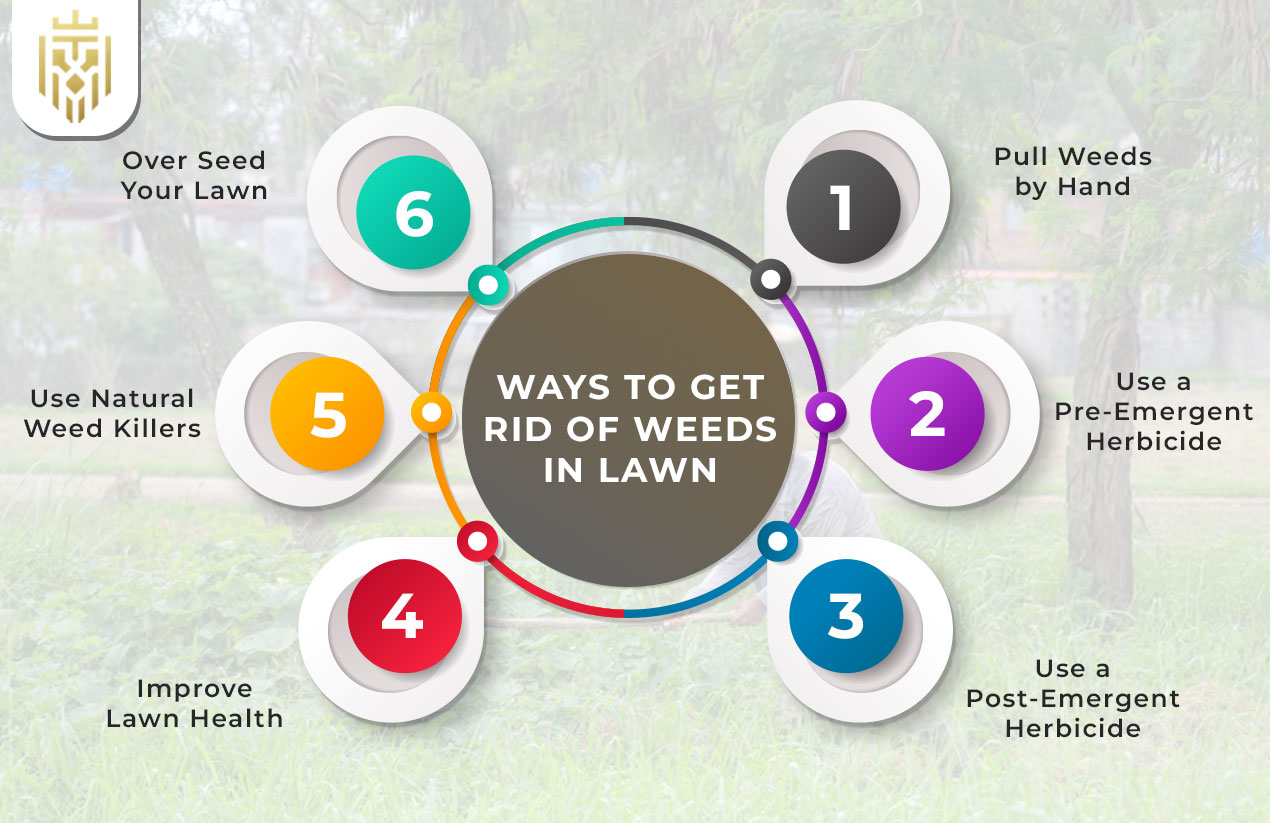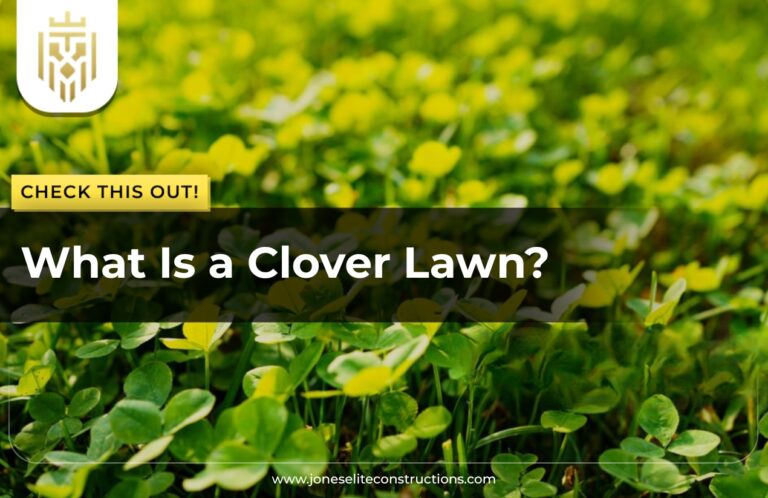What are Lawn Weeds?
Lawn weeds are unwanted plants that compete with grass for water, sunlight, and nutrients, and they thus affect the health and appearance of the lawn. They spread easily and weaken turfgrass and can be complicated to control unless lawn care is properly practised. It is essential to identify common lawn weeds for effective lawn weed identification and their timely removal.
What causes Weeds in Lawn?

These are some of the high causes of weeds in lawns which include improper watering, mowing issues, soil problems, lack of weed control, and environmental stress. The result of weak grass allows the well-known lawn weeds to spread and compete for resources.
-
Improper Watering
Too much watering would create soggy soil which would encourage the growth of moisture-loving weeds in the lawn. On the other hand, inadequate water supply weakens grass and makes it easier for weeds to invade. Proper watering helps strengthen grass and become resistant to developing free spaces available for weeds to develop and thrive. Proper watering acts as an answer on how to control weeds in lawn by restricting their growth conditions.
-
Mowing Issues
Cutting grass too low, scalping the lawn, irregular height of mowing, dull blades, and rare mowing provide a conducive environment for the growth of weeds. Proper mowing methods enable maintenance of the lawn’s health so that grass can compete against the common lawn weeds. Correct mowing practices are important for the way on how to get rid of weeds in lawn effectively.
-
Soil Problems
Poor drainage, compacted soil, wrong fertilisation, unbalanced pH, and organic matter lead to weak grass and more susceptible weeds in lawn. Healthy soil management through aerating and fertilising correctly creates a lower weed growth environment in lawns. Lawn weed identification helps in targeting soil conditions that add to weed problems.
-
Lack of Weed Control Measures
Not using viable weed control measures enables weeds in lawn to spread and establish. Improper mowing, inconsistent watering, soil issues, and pest damage weaken the lawn, creating gaps for weeds to thrive. Implementing proper maintenance is very important for how to kill weeds in lawn efficiently.
-
Environmental Factors
High temperatures, improper fertilisation, too much shade, compacted soil, and wrong mowing heights will stunt the grass, putting common lawn weeds in the best conditions to thrive. When environment conditions favour weed growth over that of the lawn, weeds will outcompete grass for resources. Monitoring these factors helps in how to control weeds in lawn.
What Happens When You Have Weeds in Your Lawn?

Weeds in the lawn destroy aesthetics, weaken the grass, consume nutrients, and attract pests. Their aggressive spread makes lawn weed identification essential so that possible action can be taken immediately. Knowing how to get rid of weeds in lawn prevents further damage from occurring and the maintenance of a healthy lawn.
-
Damaged Lawn Appearance
Weeds in lawn interfere with uniformity owing to their differences in colour, texture, and height, hence give a patchy appearance to the lawn. Dense clusters of weeds diminish the curb appeal giving the unkept appearance negating the entire aesthetics. Early identification of common lawn weeds helps keep the lawn looking good.
-
Soil Degradation
Common lawn weeds deplete soil nutrients, change its pH, disrupt soil structure, and cause erosion. Their well-developed roots deplete the nutrients from the irreplaceable mineral base, thus reducing fertiliser capacity for the lawn. Routine soil management can, along with lawn weed identification, stave off long-term deterioration.
-
Rapid Spread
The only ways weeds in lawn proliferate are through seeds and subterranean roots. These plants contest with grass for moisture, nutrients, and sunlight. Their aggressive dispersal across the lawn makes it difficult to control them if they manage to establish themselves. Knowing how to kill weeds in lawn early will help in reducing widespread infestation.
-
Competition of Weeds for Resources
Common lawn weeds take away water, nutrients, and sunlight from the grass, thereby reducing growth. Because of their superior ability for uptake and greater depth of rooting, these are enabled to suck more nutrients rapidly.
Water
Common lawn weeds pull moisture from the soil, stealing hydration from grass. These plants also transpire more than grass, causing the loss of moisture. Effective means of how to control weeds in lawn ensure sufficient hydration for the grass.
Nutrients
These weeds absorb vital nutrients and nitrogen, phosphorus, and potassium faster than grass can, hence reducing the soil fertility. With deep roots and rapid absorption, weeds can tap bodily nutrients efficiently. Lawn weed identification enables targeted nutrient management of the type of plant.
Sunlight
Weeds with large leaves and erect growth forms create more shade over grass, thereby blocking sunlight. This denies the grass energy needed for photosynthesis, which weakens its growth. Correct know-how in how to kill weeds in lawn thus ensures grass receives direct sunlight.
-
Harbouring Insects and Diseases:
Weeds in lawn provide a habitat for insects and pathogens. They provide a convenient shelter to insects, rodents, and pathogens that could increase the risk of infestation damaging grass and other plants. Preventing weed growth is one of the methods of how to control weeds in lawn.
Ways To Get Rid Of Weeds in Lawn

Methods on how to get rid of weeds in lawn include hand pulling, herbicides, over seeding, improved lawn health, etc. There are also natural ways, such as using vinegar or mulch. Recognizing and acting on weeds in lawns prevents them from coming back.
-
Pull Weeds by Hand
Hand pulling of weeds from lawn would ensure that weeds are fully removed along with roots so that regrowth will not take place. It is easier when the soil is moist. Regular manual weeding will bring the garden to a weed-free state just before seeds are set. This natural way is great for getting rid of weeds from the lawn.
-
Use a Post-Emergent Herbicide
Post-emergent herbicides are designed for common weeds in lawns that are already sprouted. Spraying onto weed leaves directly disturbs their growth and helps in controlling infestations. Selecting the right herbicide is important for how to kill weeds in lawn.
-
Use a Pre-Emergent Herbicide
Pre-emergent herbicides prevent germination of weeds in lawn, thus preventing establishment of infestations. Best applied even before weed growth, they create a protective barrier in the soil. This is how weeds are controlled in lawn the proactive way.
-
Improve Lawn Health
A well-tended lawn on its own resists common lawn weeds. The combination of regular mowing, appropriate watering, fertilising, aeration, and timely weeding can result in dense and healthy grass, which will outcompete weeds. All those practices are impacting lawn care directly to how to manage long-term those weeds in lawns.
-
Use Natural Weed Killers
Natural how to kill weeds in lawn methods include hand-pulling, boiling water, vinegar sprays, salt application, mulching, and corn gluten meal. These are earth-friendly techniques used to restrict weeds in lawn while reducing chemicals. Organic methods remain the best for long time uses in identifying and controlling weeds in the lawn.
-
Over Seed Your Lawn
Overseeding is another means of thickening the lawn, thereby filling up the bare areas that could develop into possible invaders where weeds in lawn could flourish. Crowding out by new grass weeds enhances density and quality of the lawn because there would be fewer areas exposed to more sunlight. Such practice of over seeding is also favourable in the direction of how to control weeds in lawn naturally and effectively.
FAQs
1) What are lawn weeds?
Lawn weeds are unwanted plants that compete with grass for water, sunlight, and nutrients, and they thus affect the health and appearance of the lawn. They spread easily and weaken turfgrass and can be complicated to control unless lawn care is properly practised.
2) What causes weeds to grow on the lawn?
These are some of the high causes of weeds in lawns which include improper watering, mowing issues, soil problems, lack of weed control, and environmental stress. The result of weak grass allows the well-known lawn weeds to spread and compete for resources.
3) How do I get rid of weeds in my lawn?
Methods on how to get rid of weeds in lawn include hand pulling, herbicides, over seeding, improved lawn health, etc. There are also natural ways, such as using vinegar or mulch. Recognizing and acting on weeds in lawns prevents them from coming back.
4) How can I prevent weeds from coming back?
Maintain dense growth of grass, correct mowing, deep but infrequent watering, regular fertilisation, and pre-emergent herbicides. Constant weed identification helps identify them very early in the season. A healthy lawn naturally restricts lawn weeds, hence avoiding future infestations.









